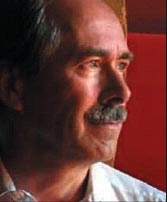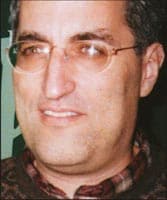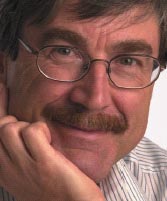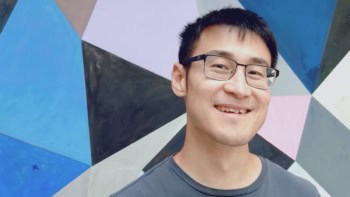Einstein was one of the founders of quantum mechanics, yet he disliked the randomness that lies at the heart of the theory. God does not, he famously said, play dice. However, quantum theory has survived a century of experimental tests, although it has yet to be reconciled with another of Einstein's great discoveries - the general theory of relativity. Below four theorists - Gerard 't Hooft, Edward Witten, Fay Dowker and Paul Davies- outline their views on the current status of quantum theory and the way forward
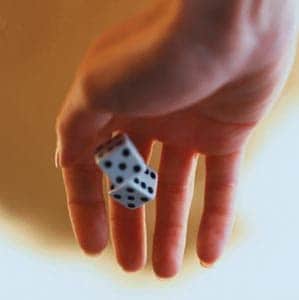
Gerard ‘t Hooft argues that the problems we face in reconciling quantum mechanics with general relativity could force us to reconsider the basic principles of both theories.
If there is any preconceived notion concerning the laws of nature – one that we can rely on without any further questioning – it is the assumption that they are controlled by strict logic. Under all conceivable circumstances, the laws of nature should dictate how the universe evolves. Curiously, however, quantum mechanics has given a new twist to this adage. It does not allow a precise sequence of events to be predicted, only statistical averages. All statistical averages can be predicted – in principle with infinite accuracy – but nothing more than that.
Einstein was one of the first people to protest against this impoverishment of the concept of logic. It has turned out, however, to be a fact of life. Quantum mechanics is the only known realistic description of the microscopic parts of our universe like atoms and molecules, and it works just fine. Logically impoverished or not, quantum mechanics appears to be completely self-consistent.
But how does quantum mechanics tie in with particles that are much smaller than atoms? The Standard Model is the beautiful solution to two fundamental problems: one, how to combine quantum mechanics with Einstein’s theory of special relativity; and two, how to explain numerous experimental observations concerning the behaviour of sub-atomic particles in terms of a concise theory. This model tells us how far we can go with quantum mechanics. Provided that we adhere strictly to the principles of quantum field theory, nature obeys both quantum mechanics and special relativity up to arbitrarily small distance and time scales.
Just like all other successful theories of nature, the Standard Model obeys the notions of locality and causality, which makes this theory completely comprehensible. In other words, the physical laws of this theory describe in a meaningful way what happens under all conceivable circumstances. The standard theory of general relativity, which describes the gravitational forces in the macroscopic world, approaches a similar degree of perfection. Einstein’s field equations are local, and here, cause also precedes effect in a local fashion. These laws, too, are completely unambiguous.
But how can we combine the Standard Model with general relativity? Many theorists appear to think that this is just a technical problem. But if I say something like “quantum general relativity is not renormalizable”, this is much more than just a technicality. Renormalizability has made the Standard Model possible, because it lets us answer the question of what happens at extremely tiny distance scales. Or, more precisely, how can we see that cause precedes effect there? If cause did not precede effect, we would have no causality or locality – and no theory at all.
Asking both questions in quantum gravity does not appear to make sense. At distance scales small compared with the Planck scale, some 10-33 cm, there seems to be no such thing as a space-time continuum. That is because gravity causes space-time to be highly curved at very small distances. And at small distance scales, this curvature exceeds all bounds. But what exactly does this mean? Are space and time discrete? What then do concepts such as causality and locality mean? Without proper answers to such questions, there is no logically consistent formalism, not even a quantum-mechanical one.
One ambitious attempt to combine quantum mechanics with general relativity is superstring theory. However, I am unhappy with the answers that this theory seems to suggest to us. String theory seems to be telling us to believe in “magic”: it is claimed that “duality theorems”, which are not properly understood, will allow us to predict features without reference to locality or causality. To me such magic is synonymous with “deceit”. People only rely on magic if they do not understand what is really going on. This is not acceptable in physics.
In thinking about these matters, I have reached a conclusion that few other researchers have adopted: the problem lies with quantum mechanics, possibly with general relativity, or conceivably with both.
Quantum mechanics could well relate to micro-physics the same way that thermodynamics relates to molecular physics: it is formally correct, but it may well be possible to devise deterministic laws at the micro scale. However, many researchers say that the mathematical nature of quantum mechanics does not allow this – a claim deduced from what are known as “Bell inequalities”. In 1964 John Bell showed that a deterministic theory should, under all circumstances, obey mathematical inequalities that are actually violated by the quantum laws.
This contradiction, however, arises if one assumes that the particles we talk about, and their properties, are real, existing entities. But if we assume that objects are only real if they have been precisely defined, including all oscillations as small as the Planck scale – and that only our measurements of the properties of particles are real – then there is no blatant contradiction. One might assume that all macroscopic phenomena, such as particle positions, momenta, spins and energies, relate to microscopic variables in the same way thermodynamic concepts such as entropy and temperature relate to local, mechanical variables. Particles, and their properties, are not (or not entirely) real in the ontological sense. The only realities in this theory are the things that happen at the Planck scale. The things we call particles are chaotic oscillations of these Planckian quantities. What exactly these Planckian degrees of freedom are, however, remains a mystery.
This leads me to an even more daring proposition. Perhaps general relativity does not appear in the formalism of the ultimate equations of nature. In making the transition from a deterministic theory to a statistical – i.e. quantum mechanical – treatment, one may find that the quantum description develops many more symmetries than the deeper deterministic description.
Let me try to clarify what I mean. If, according to the deterministic theory, two different states evolve into the same final state, then quantum mechanically these states will be indistinguishable. We call such a feature “information loss”. In quantum field theories such as the Standard Model, we often work with fields that are not directly observable, because of “gauge invariance”, which is a symmetry. Now, I propose to turn this around. In a deterministic theory with information loss, certain states are unobservable (because information about them has disappeared). When one uses a quantum-mechanical language to describe such a situation, gauge symmetries naturally arise. These symmetries are not present in the initial laws. The “general co-ordinate covariance” of general relativity could be just such a symmetry. This is indeed an unusual view on the concept of symmetries in nature.
Nature provides us with one indication that perhaps points in this direction: the unnatural, tiny value of the cosmological constant Λ. It indicates that the universe has a propensity to stay flat. Why this happens is a mystery that cannot be explained in any theory in which gravitation is subject to quantum mechanics. If, however, an underlying, deterministic description naturally features some preferred flat co-ordinate frame, the puzzle will cease to perplex us. There might be another example, which is the preservation of the symmetry between the quarks in the subatomic world, called charge-parity (CP) symmetry – a symmetry that one would have expected to be destroyed by their strong interactions.
The problem of the cosmological constant has always been a problem of quantum gravity. I am convinced that the small value of Λ cannot be reconciled with the standard paradigms of quantized fields and general relativity. It is obvious that drastic modifications in our way of thinking, such as the ones hinted at in this text, are required to solve the problems addressed here.
Edward Witten thinks that one of the most perplexing aspects of quantum mechanics is how to apply it to the whole universe
Quantum mechanics is perplexing, and likely to remain so. The departure from ordinary classical intuition that came with the emergence of quantum mechanics is almost surely irrevocable. An improved future theory, if there is one, will probably only lead us farther afield.
Is there any hint of a clue that might lead to a more complete theory? Experimental physicists are increasingly able to perform experiments that used to be called thought experiments in textbooks. Quantum mechanics has held up brilliantly. If there is a cloud on the horizon, it is that it is hard to see what it means to apply quantum mechanics to the whole universe. I suppose that there are two aspects to this. Quantum-mechanical probabilities do not seem to make much sense when applied to the whole universe, which appears to happen only once. And we all find it confusing to include ourselves in a quantum description of the whole universe.
Yet applying quantum mechanics to something less than the whole universe – to an experimental system that is observed by a classical human observer – is precisely what forces us to interpret quantum mechanics in terms of probabilities. If we had a good understanding of what quantum mechanics means when applied to the whole universe, we might ultimately say that the notion that “God plays dice” results from trying to describe a quantum reality in classical terms.
Fay Dowker thinks that the puzzles of quantum mechanics could be solved by considering what are known as the “histories” of a system, as introduced by Richard Feynman
The development of quantum mechanics was a major advance in our understanding of the physical world. However, quantum mechanics has not yet come fully to fruition because it has not replaced classical mechanics in the way that general relativity has replaced Newtonian gravity. In the latter case, we can start from general relativity and derive the laws of Newtonian gravity as an approximation; we can also predict when – and quantitatively to what extent – that approximation is valid.
But we cannot yet derive classical mechanics from quantum mechanics in the same way. The reason is that, in its standard textbook formulation, quantum mechanics requires us to assume we have classical measuring equipment. Predictions about the measurements that are recorded, or observed, by this equipment form the scientific output of the theory. But without a classical observer, we cannot make any predictions. While many physicists have been content with quantum mechanics in its textbook form, others – beginning with Einstein – have sought to complete the quantum revolution and make it a truly universal theory, independent of any classical crutch.
One attempt to sort out quantum mechanics is to view it as a generalization of classical “stochastic” theories, such as Brownian motion. In Brownian motion, a particle moves along one of a number of possible trajectories, or “histories”. The notion of a history is crucial here: it is a complete description of the system at each time between some initial and final times. A history is an a priori possibility for the complete evolution of the system, and the collection of all the histories is called the “sample space”.
The system will have only one actual history from the sample space but any one is an a priori possibility. The actual history is chosen from the sample space at random according to the “law of motion” for a Brownian particle. This law is a probability distribution, or “measure”, on the sample space that outlines, roughly, how likely each history is for the actual evolution.
Quantum mechanics also has a sample space of possible histories – trajectories of a particle, say – but on this occasion the sample space has a “quantal measure” associated with it. As with Brownian motion, the quantal measure gives a non-negative number for each subset of the sample space. However, this quantal measure cannot now be interpreted as a probability because of the phenomenon of quantum interference, which means that the numbers cannot be added together like probabilities.
For example, when electrons pass through a Young’s double-slit set-up, the quantal measure of the set of all histories for the electron that ends up at a particular region on the screen is not just the quantal measure of the set of histories that goes through one slit added to the quantal measure of the set of histories that goes through the other. Essentially, this is due to the phenomenon we call quantum interference between histories, which is due, in turn, to the way we calculate the quantum measure of a bunch of histories as the square of the sum of the amplitudes of the histories in the bunch. When you add some numbers and then square the result, you do not get the sum of the squares – there are also cross terms, which are the expression of the interference that spoils the interpretation as probabilities.
The challenge is to find the right interpretation of this quantal measure, one that explains the textbook rules by predicting objectively when classical “measurement” situations arise. This includes the struggle to understand quantum mechanics as a theory that respects relativistic causality in the face of experimental evidence that widely separated particles can be correlated in ways that seem incompatible with special relativity.
It is no coincidence that those physicists who are at the forefront of developing this histories approach to quantum mechanics – people like James Hartle from the University of California at Santa Barbara, Chris Isham at Imperial College, London and Rafael Sorkin at Syracuse University – all work on the problem of quantum gravity, which is the attempt to bring gravity within the framework of a universal quantum theory. In histories quantum gravity, each history in the sample space of possibilities is not in space-time; rather, each history is a space-time. If a theory of quantum gravity of this sort can be achieved, it would embody Einstein’s hopes for a unification in which matter and space-time, observer and observed, are all treated on an equal footing.
Paul Davies believes that the complexity of a system could define the boundary between the quantum and classical worlds
Despite its stunning success in describing a wide range of phenomena in the micro-world, quantum mechanics remains a source of puzzlement. The trouble stems from meshing the quantum to the classical world of familiar experience. A quantum particle can be in a superposition of states – for example it may be in many places at once – whereas the “classical” world of observation reveals a single reality. This conundrum is famously captured by the paradox of Schrödinger’s cat, in which a quantum superposition is amplified in order to put an animal into an apparently live-dead hybrid state.
Physicists divide into those who believe quantum mechanics is a complete theory that applies to the universe as a whole, regardless of scale, and those who think it must break down at some level between atom and observer. The former group subscribe to the “many universes” interpretation, according to which all branches of a quantum superposition are equally valid and describe parallel realities. Though many physicists reject this interpretation as unacceptably bizarre, there is no consensus on the alternative. Quantum mechanics does not seem to fail at any obvious scale of size or mass, as the phenomenon of superconductivity attests. So perhaps some other property of a physical system signals the emergence of classicality from the quantum realm? I want to suggest that complexity may be the appropriate quantity.
Just how complex must a system be to qualify for the designation “classical”? A cat is, I submit, a classical object because it is complex enough to be either alive or dead, and not both at the same time. But specifying a precise measure of complexity is difficult. Many definitions on offer are based on information theory or computing. There is, however, a natural measure of complexity that derives from the very nature of the universe.
This is defined by the maximum amount of information that the universe can possibly have processed since its origin in a Big Bang. Seth Lloyd of the Massachusetts Institute of Technology has computed this to be about 10120 bits (2000 Nature 406 1047 and 2002 Phys. Rev. Lett. 99 237901). A system that requires more than this quantity of information to describe it in detail is so complex that the normal mathematical laws of physics cannot be applied to arbitrary precision without exceeding the information capacity of the universe. Cosmology thus imposes a small but irreducible uncertainty, or fuzziness, in the operation of physical laws.
For most systems the Lloyd limit is irrelevantly large. But quantum systems are described by vectors in a so-called Hilbert space, which may have a great – indeed infinite – number of dimensions. According to my maximum-complexity criterion, quantum mechanics will break down when the dimensionality of the Hilbert space exceeds about 10120.
A simple example is an entangled state of many electrons. This is a special form of superposition in which up and down spin orientations co-exist in all possible combinations. Once there are about 400 electrons in such a state, the Lloyd limit is exceeded, suggesting that it is at this level of complexity that classicality emerges. Although such a state is hard to engineer, it lies firmly within the design specifications of the hoped-for quantum computer. This is a machine that would harness quantum systems to achieve an exponentially greater level of computing power than a conventional computer. If my ideas are right, then this eagerly awaited technology will never achieve its full promise.
